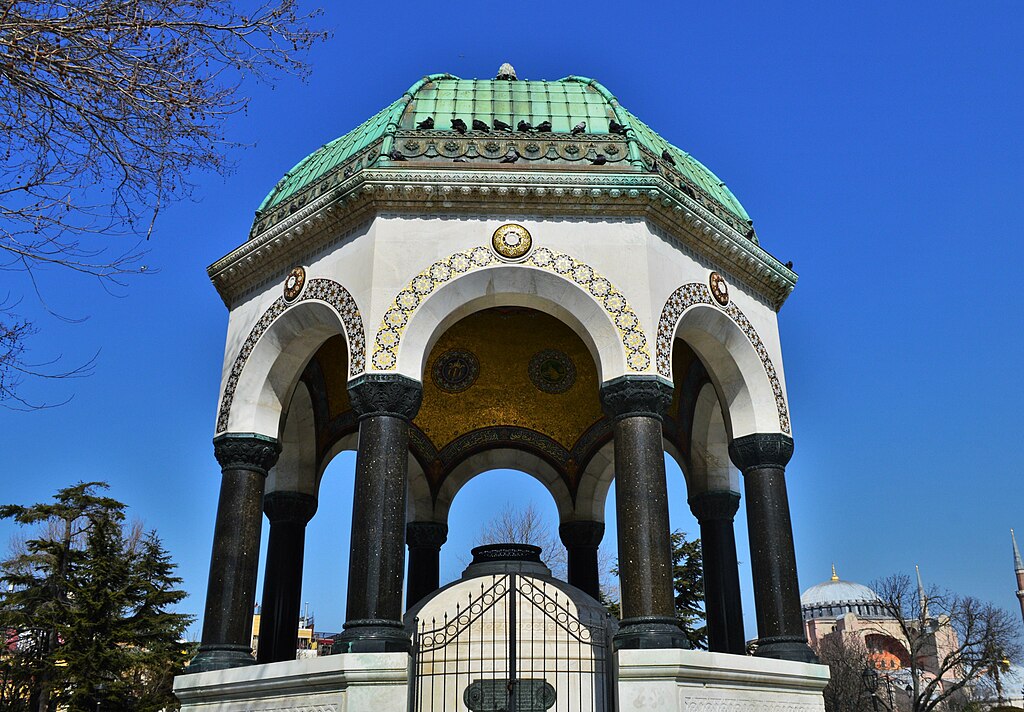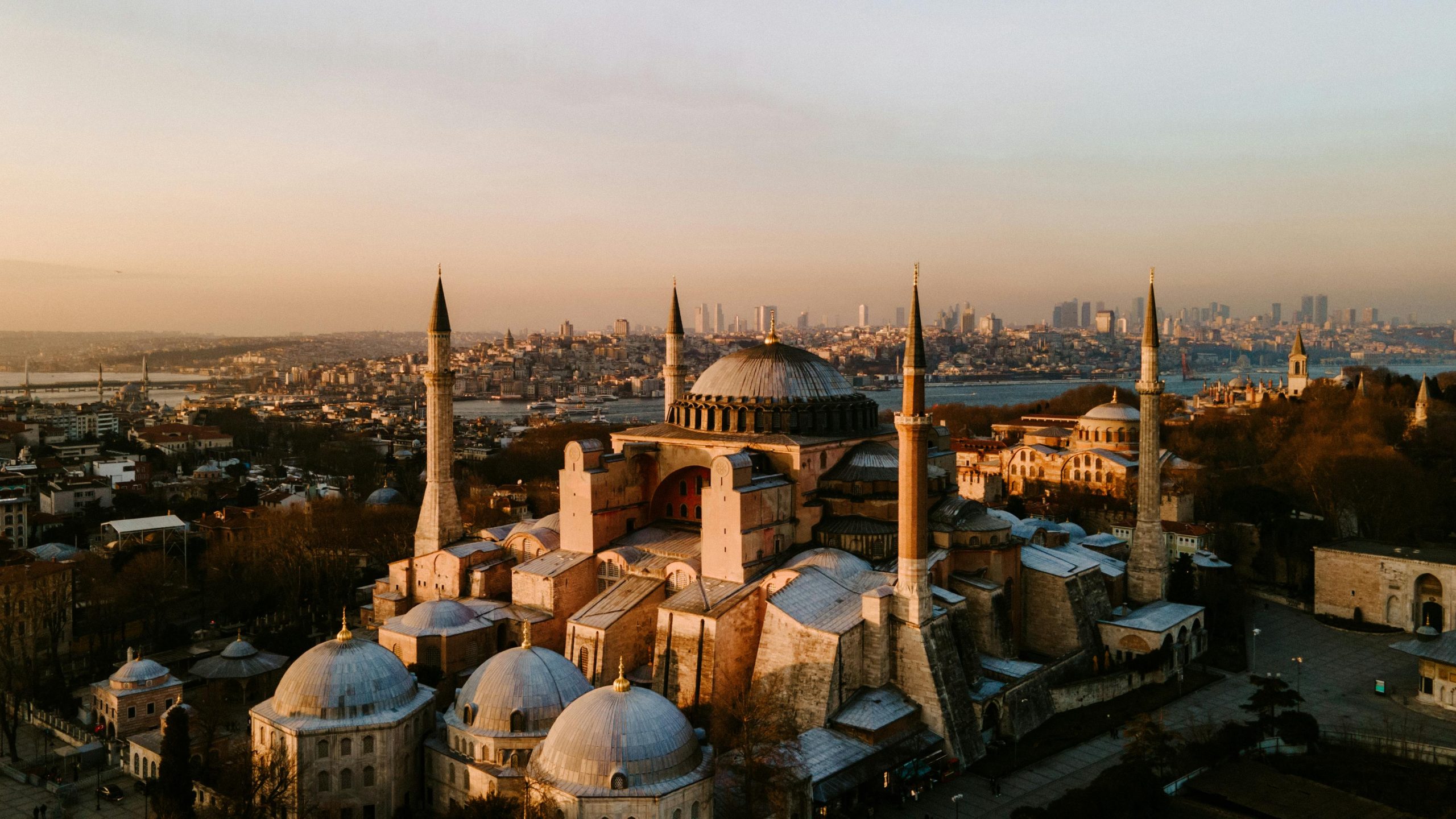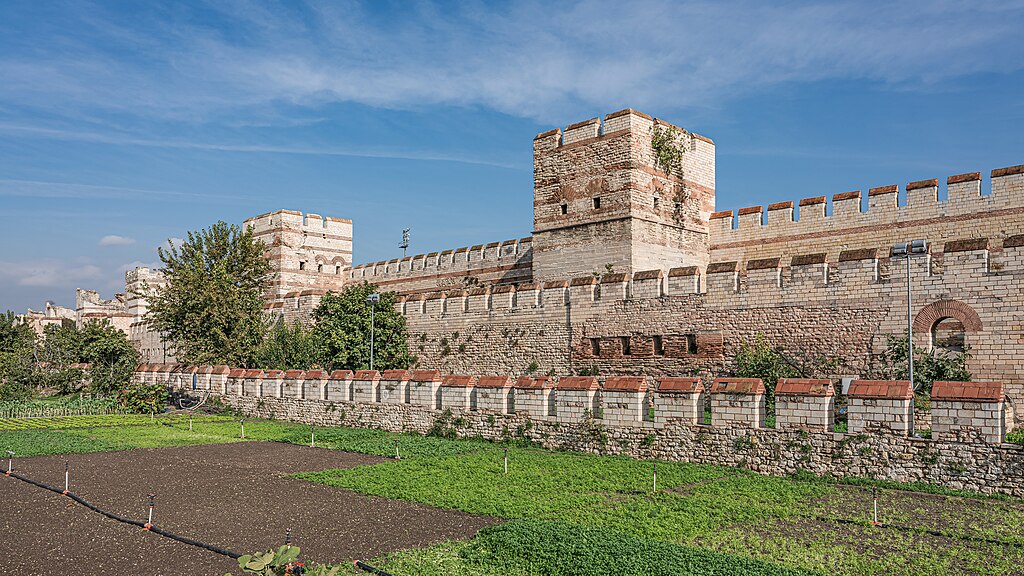German Fountain, Istanbul
Fountain in Istanbul

At the northern end of Sultanahmet Square, just a short stroll from Hagia Sophia, stands one of Istanbul's most charming landmarks — the German Fountain. This elegant, domed structure gleams under the sunlight, its golden mosaics and marble columns blending European craftsmanship with Ottoman grace. Gifted by German Emperor Kaiser Wilhelm II to Sultan Abdülhamid II, it commemorates the Kaiser's 1898 visit to Istanbul and stands as one of the top attractions in Istanbul for travelers exploring the Old Town.
Though smaller than the monumental mosques that surround it, the German Fountain's design and symbolism carry great historical weight. It's not only an architectural gem but also a political statement frozen in stone and gold — a reminder of the early 20th-century alliance between Germany and the Ottoman Empire. Its perfect symmetry and intricate details make it a great place to visit on a walking tour of Istanbul, particularly for those who appreciate how even small monuments can reveal great stories.
History and Significance of the German Fountain
The German Fountain (Alman Çeşmesi) was constructed in Germany, shipped piece by piece to Istanbul, and assembled on-site in 1900. It was built to mark the second state visit of Kaiser Wilhelm II, who toured the Ottoman Empire in 1898 as part of his political and cultural outreach. The fountain's inauguration took place on January 27, 1901 — the Kaiser's birthday — in a ceremony attended by both Ottoman and German dignitaries, symbolizing the friendship and alliance of the two nations during a pivotal era in world history.
Architecturally, the fountain is a masterpiece of neo-Byzantine style. Its octagonal dome rests on eight polished marble columns of dark green, while the interior glimmers with gold mosaics that feature the imperial monograms of Wilhelm II and Sultan Abdülhamid II intertwined. The design was intended not just as decoration but as a diplomatic gesture, blending elements of East and West to reflect both empires' aspirations for modernity and mutual respect.
Over the years, the German Fountain has witnessed the transformation of the city around it — from Ottoman Constantinople to modern Istanbul. It has survived wars, revolutions, and waves of change, yet still stands gracefully at the crossroads of history. To this day, it remains a quiet symbol of international friendship and the enduring artistry of a bygone age.
Things to See and Do in the German Fountain
Although you can't step inside the fountain, its details are worth admiring up close. Look for the shimmering gold mosaics inside the dome and the alternating coats of arms of Germany and the Ottoman Empire that encircle it. The craftsmanship is exquisite — every curve and tile a reflection of the era's finest artisanship. When the sunlight hits the mosaics at midday, the entire dome seems to glow.
Take a few moments to rest on the benches nearby and enjoy the lively energy of Sultanahmet Square. The German Fountain stands in perfect visual harmony with the surrounding landmarks, offering clear views of the Blue Mosque and Hagia Sophia. It's also one of the most photographed spots in the square — especially at sunrise, when the domes of both monuments frame its elegant canopy.
Because it's centrally located, the German Fountain is often visited on walking tours of Istanbul that trace the city's Byzantine and Ottoman heritage. It serves as a peaceful place to pause, reflect, and perhaps imagine the pomp of the early 1900s when the Kaiser's visit made international headlines and reshaped diplomatic ties between Europe and the East.
How to Get There
The German Fountain is located in Sultanahmet Square, right between the Blue Mosque and Hagia Sophia. It's easily accessible via the T1 tram line, with Sultanahmet station just a two-minute walk away. Visitors arriving by train can use Sirkeci railway station, about 15 minutes away on foot. You can use the official TCDD Taşımacılık website to check schedules, compare routes, and purchase tickets for Turkey's national and regional trains operated by TCDD. For a more streamlined experience (especially if you prefer an English interface or want to compare across countries), we recommend using Omio, which allows you to easily compare prices, schedules, and book train tickets across Turkey and the rest of Europe — all in one place. Those arriving by car will find several paid parking areas near Gülhane Park and the Hippodrome, though parking can be limited during peak hours. If you are looking to rent a car in Turkey I recommend having a look at Discover Cars, first, as they compare prices and review multiple car rental agencies for you.
Practical Tips on Visiting the German Fountain
- Best time to visit the German Fountain: Early morning or late afternoon for soft light and fewer crowds.
- Entrance fee in Euros: Free.
- Opening hours: Open 24/7 (outdoor monument).
- Official website: Not applicable.
- How long to spend: 10–15 minutes as part of a walking tour.
- Accessibility: Fully accessible; flat area with nearby seating.
- Facilities: Public restrooms and cafés located nearby in Sultanahmet Square.
- Photography tip: Stand slightly to the southeast for a view framing Hagia Sophia behind the fountain.
- Guided tours: Frequently included in Old Town and Sultanahmet walking tours.
- Nearby food options: Plenty of cafés, tea houses, and restaurants along Divanyolu Caddesi and near the Blue Mosque.
Is the German Fountain worth visiting?
Yes. Though smaller than Istanbul's grand mosques and palaces, the German Fountain offers a beautiful glimpse into the city's 19th-century history and international connections. It's one of the best places to visit in Istanbul if you want to appreciate how art, politics, and architecture can intertwine to tell a global story on a local stage.
FAQs for Visiting the German Fountain
When was the German Fountain built?
It was built in Germany in 1898 and inaugurated in Istanbul in 1901.
Why is it called the German Fountain?
It was a gift from Kaiser Wilhelm II of Germany to Sultan Abdülhamid II to mark their diplomatic alliance.
Can you drink from the fountain today?
No, the water system is no longer in use.
Is it lit up at night?
Yes, the fountain and the surrounding square are softly illuminated after sunset.
Is it near other attractions?
Yes, it's surrounded by major landmarks, including Hagia Sophia, the Blue Mosque, and the Basilica Cistern.
Nearby Attractions to the German Fountain
- Hagia Sophia – The city's most famous monument, blending Byzantine and Ottoman design.
- Blue Mosque – Sultan Ahmed I's breathtaking 17th-century mosque known for its blue İznik tiles.
- Basilica Cistern – The atmospheric underground water palace built by Emperor Justinian I.
- Topkapi Palace – The opulent former residence of Ottoman sultans overlooking the Bosphorus.
- Sultan Ahmet Park – A scenic public garden offering perfect views of both Hagia Sophia and the Blue Mosque.
The German Fountain appears in our Complete Guide to Visiting Istanbul!
This website uses affiliate links which may earn a commission at no additional cost to you!
Visiting German Fountain
Nearby Attractions
- Sultanahmet Square (0.1) km
Square in Istanbul - Sultan Ahmet Park (0.1) km
Park in Istanbul - Stone of Milion (0.1) km
Historic Site in Istanbul - Obelisk of Theodosius (0.2) km
Historic Site in Istanbul - Basilica Cistern (0.2) km
Historic Building in Istanbul - Blue Mosque (0.2) km
Mosque in Istanbul - Turkish and Islamic Arts Museum (0.2) km
Museum in Istanbul - Hurrem Sultan Hamam (0.2) km
Baths and Historic Building in Istanbul - Serpent Column (0.2) km
Historic Site in Istanbul - Arasta Bazaar (0.2) km
Bazaar in Istanbul


